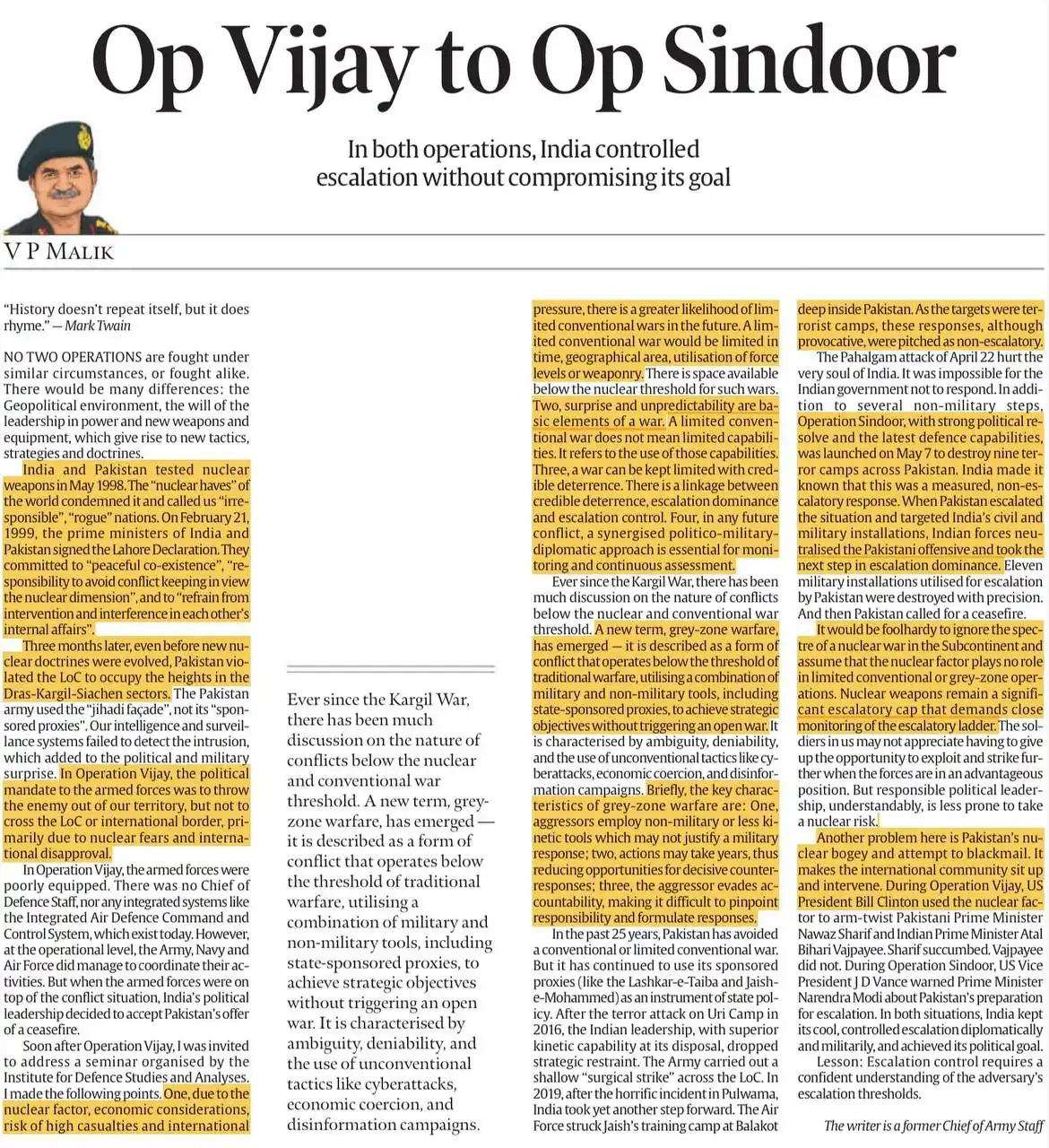UPSC Security UPSC UPSC UPSC UPSC UPSC UPSC UPSC Upsc Upsc UPSC UPSC UPSC UPSC UPSC UPSC UPSC UPSC™
May 27, 2025 at 02:36 PM
🔆 Key Takeaways: Kargil Conflict and Its Strategic Lessons
✅ Historical Context:
• Despite the 1999 Lahore Declaration aiming for peace post-nuclear tests, Pakistan launched a Kargil incursion disguised as jihadi militants.
• Operation Vijay faced constraints—Indian forces could not cross the LoC due to nuclear risks and international pressure.
✅ Lessons from Operation Vijay:
• Indian forces showed poor preparedness, lacking a Chief of Defence Staff and integrated command.
• Tri-services coordination was effective despite limitations.
• Ceasefire acceptance was driven by nuclear deterrence and diplomatic concerns.
✅ Limited Conventional War Doctrine:
• Conflicts can occur below the nuclear threshold, limited by time, geography, or force but not capability.
• Requires credible deterrence and escalation control mechanisms.
✅ Grey-Zone Warfare:
• Uses cyberattacks, disinformation, proxies, operating below traditional war thresholds with ambiguity and deniability.
• Pakistan’s use of terror proxies like LeT and JeM exemplifies this.
✅ India’s Changing Posture:
• Shift from restraint to measured strikes:
• 2016 surgical strikes (post-Uri)
• 2019 Balakot airstrike (post-Pulwama)
✅ Nuclear Deterrence & Escalation Management:
• Nuclear factor limits escalation; requires coordinated politico-military-diplomatic response.
• International actors (e.g., USA) aid de-escalation.
✅ Strategic Lessons:
• Limited and grey-zone wars are probable under nuclear conditions.
• Synergy in political, military, diplomatic domains is critical.
• Escalation dominance demands credible deterrence and controlled response.
• India must build resilient defence and strategic foresight for future conflicts.
#defense #strategicstudies

👍
👙
3